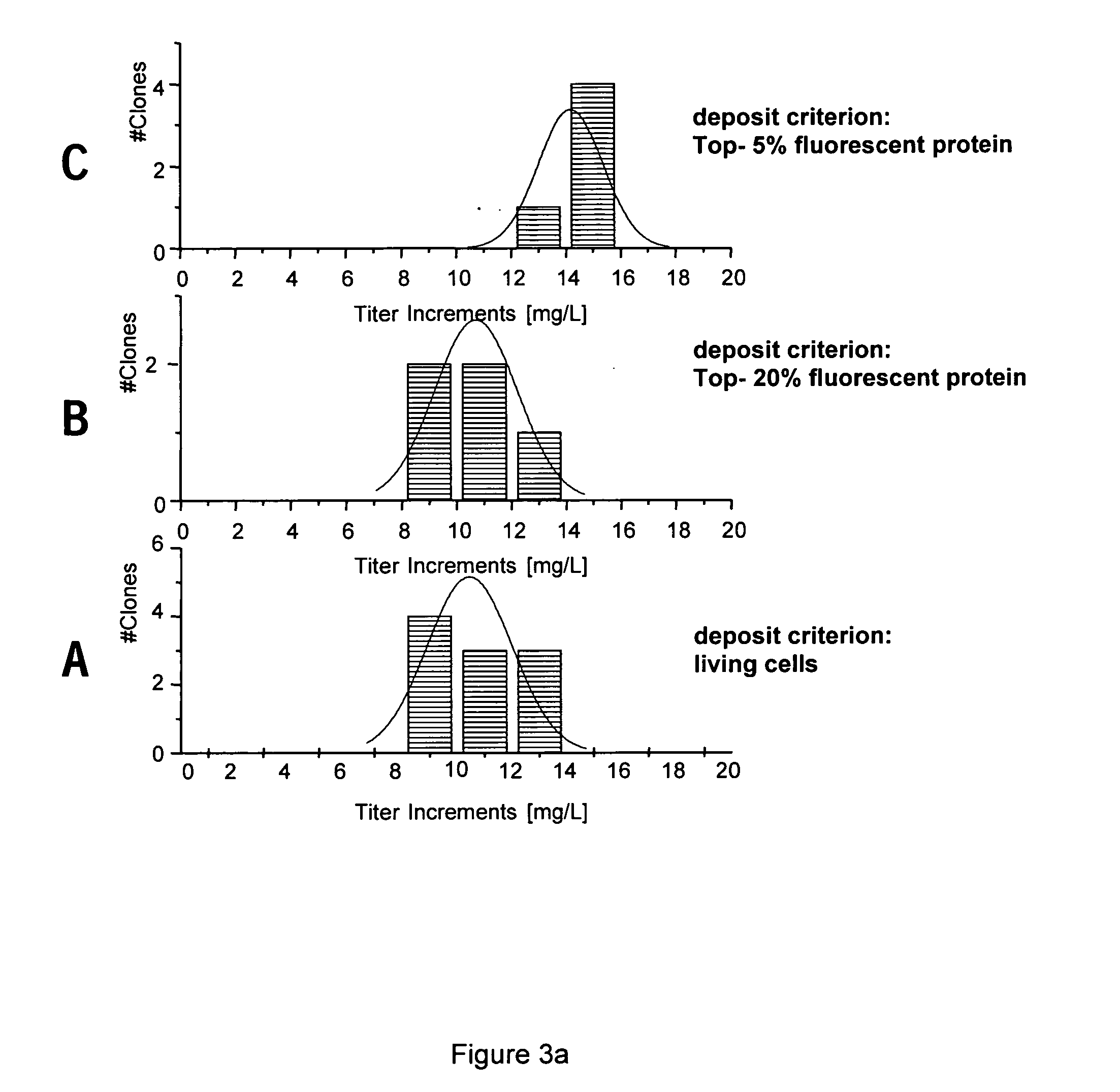Method for recloning production cells
a production cell and cell technology, applied in the field of cell culture technology, can solve the problems of time-consuming recloning method, inability to replicate at all, and inability to efficiently replicate,
- Summary
- Abstract
- Description
- Claims
- Application Information
AI Technical Summary
Benefits of technology
Problems solved by technology
Method used
Image
Examples
example 1
Influence of the Energy Dose During the Production of the Feeder Cells on the Reckoning Efficiency of CHO-DG-44 Cells
In order to investigate the influence of the dose of energy during the production of the feeder cells on the recloning efficiency, the CHO-DG-44 cells were grown as described under Methods “Culturing of the cells”. The feeder cells were prepared as described in Methods “Preparation of feeder cells by irradiation” with an energy dose of 20 Gy, 50 Gy, 100 Gy, 200 Gy and 500 Gy. After the irradiation the feeder cells were seeded into 96-well microtitre plates with a cell count of about 2000 cells / well and stored in an incubating chamber atmosphere. Then, automated depositing of a single cell was carried out with a recombinant CHO-DG-44 cell which expressed a fluorescent protein, as described under Methods “Automated single cell deposition”. One (1) individual cell was deposited on the feeder cells in each well. The target value for the recloning efficiency was the numb...
example 2
Homogeneity of the Reckoning of Antibody-Expressing CHO-DG44 Cells
In order to compare the homogeneity of the cell clones, recombinant antibody-expressing CHO-DG44 cells were deposited and cloned on the one hand by the standard “limited dilution” method and on the other hand deposited and cloned by the single cell deposition method described here, in the presence of autologous feeder cells (FIG. 2). For this, six cell pools of transfected antibody-expressing CHO-DG-44 cells were cultivated by the limited dilution method and parallel after the automated single cell deposition, as described under “Culturing of the cells”, and then recloned as described under “Automated single cell deposition”. The clones thus produced were cultivated as described under “Culturing of the cells” and the product titre was determined over the course of three passages using the method “Determining the productivity of recombinantly expressed gene products”. The average obtained from these three passages wa...
example 3
High Throughput Method for Generating High-Titre Cell Clones by Combining the Expression of Fluorescent Proteins with FACS-Based Cell Sorting and FACS-Based Deposition of Single Cells
By transfecting CHO DG44 cells with an expression vector which codes the bicistronic expression of a product gene (recombinant antibody) and a fluorescent protein (ZS Green from Zoanthus sp.), cell pools were obtained which co-express both the antibody and the fluorescent protein. These cell pools were individually deposited and cultured in microtitre plates in the presence of autologous CHO DG44 feeder cells using the method described above. The depositing of the clones was carried out using three different criteria. A.) Depositing all the living cells B.) Depositing the 20% most strongly fluorescent cells C.) Depositing the 5% most strongly fluorescent cells
The clones obtained were then transferred into a 24-well macrotitre plate and cultivated for three passages as described in “Cultivation of...
PUM
 Login to View More
Login to View More Abstract
Description
Claims
Application Information
 Login to View More
Login to View More - R&D
- Intellectual Property
- Life Sciences
- Materials
- Tech Scout
- Unparalleled Data Quality
- Higher Quality Content
- 60% Fewer Hallucinations
Browse by: Latest US Patents, China's latest patents, Technical Efficacy Thesaurus, Application Domain, Technology Topic, Popular Technical Reports.
© 2025 PatSnap. All rights reserved.Legal|Privacy policy|Modern Slavery Act Transparency Statement|Sitemap|About US| Contact US: help@patsnap.com



